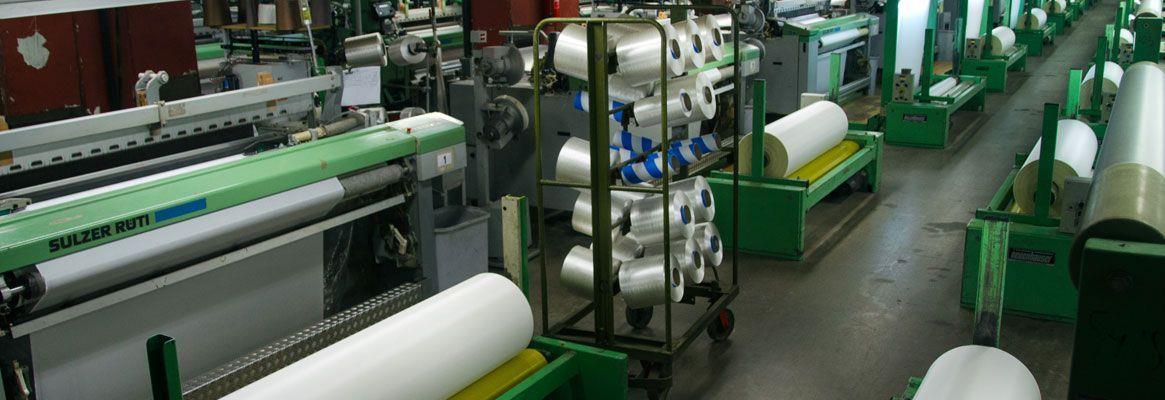Challenges facing the Indian textile and apparel sector as the country braces up to face the impact of the COVID-19 pandemic
The textile and apparel sector has become the most severely affected among manufacturing sectors due to the novel coronavirus pandemic, which has challenged the world on every front be it economy, health care, politics, planning or social values at large. It is something unprecedented in mankind's history. It is the worst nightmare of policymakers, who on one hand are trying to slow its spread, and on the other, busy in efforts to make it less deadly in terms of its social and economic impact.
When the pandemic struck, the world was totally unprepared to deal with a contingency of such magnitude and was caught napping. To slow the spread of the virus, lockdown seemed to be the only viable option. India also announced a nationwide lockdown in late March. As per the average stringency index prepared by the Oxford COVID-19 Government Response Tracker (OxCGRT), India ranked third only after France and Peru. The brunt of this lockdown was born by migrant workers, who in no time saw their dreams and livelihood shattered as factories stood idle. With no work in hand, migrant workers started moving back to their native places and the country witnessed a mass exodus of workers from cities and industrial hubs unseen in post-partition era.
The sector severely hit by the pandemic-induced lockdown is the textile and apparel. It contributes 13 per cent to India's total exports, 7 per cent to the industrial output in value terms, 2 per cent to India's gross domestic product (GDP), 15 per cent to export earnings and offers employment to around 60 million directly or indirectly. The industry was estimated to be worth $100 billion in January 2020 and includes a wide range of players, including manufacturers, retailers, wholesalers and exporters of cotton textiles, handloom and woollen textiles. It also includes those engaged in the manufacturing of capital goods, such as textile machinery and equipment, dyes and raw materials, finished textiles, fabrics and garments. Exports in the sector from India were projected to reach $82 billion in fiscal 2020-2021 from $39 billion in the last fiscal.
The pandemic has not only affected the demand for textile and apparel but also its supply. India is one of the major textiles and apparel exporters (around 60 per cent of the country's exports) to the United States and the European Union (EU) and these markets are hit hard by the virus. Buyers from these markets have either cancelled orders or put them on hold because consumers are locked inside, shopping malls are closed and access to online marketing is restricted.
A report by Wazir Advisors titled Impact of COVID-19 Scenario on European and US Apparel Market estimated that combined US and EU apparel consumption might fall by about $308 billion, around 45 per cent lower than projected in 2020. The spread of the virus has majorly impacted the textile industry as China, the United States and the EU are huge markets for Indian textile products, according to T Rajkumar, chairman of the Confederation of Indian Textile Industry (CITI). The cascading effect of external demand shock along with domestic demand slack resulted in lower production. Many firms were shut down and production fell drastically.
Retail prices now will see a jump because sanitisation and social distancing measures are going to add to the costs. This will make deficient demand a perennial phenomenon for the industry. The virus has shattered the supply chain at each level.
Most of employment in the textile and clothing industry is in the informal sector, which generally pays much lesser wages than the formal sector. While the pandemic has affected both formal and informal sectors, the impact will be more disastrous for workers in the latter. This sector is characterised by the lack of social security provisions, paid leaves, healthcare provisions and other safety measures, and therefore, workers are more vulnerable. In the formal sector, the rise in contractual workforce, a post-liberalisation phenomenon, has helped employers in retrenching workers with ease during the pandemic. This has led to a mass exodus of workers from cities back to their villages.
The Clothing Manufacturers Association of India (CMAI) had projected in April that there could be a job loss of a crore in the textile sector due to the lockdown. The losses in the textile industry in Punjab has been reportedly pegged at around ?2,000 crore so far.
Structural changes resulting from pandemic
The virus has shown us that the global supply chain is highly fragile and fundamentally susceptible to disruptions. The weaker links in the supply chain can pose a great threat to the entire ecosystem on which the textile business sustains itself. The industry across its supply chain needs reorientation and restructuring towards a more sustainable and resistant web. A Forbes article argued that prior to the pandemic, all talk related to fast fashion focused on sustainability and companies were rethinking their business models for 2030 and beyond. But the pandemic has reduced that timeline, it said. Robert Antoshak, a textile consultant, in his blog argues: "The pre-virus apparel industry was not sustainable. It was only a matter of time before the ailments in the sector caused the industry to either falter or, worse, collapse. It doesn't matter: COVID-19 has elected the latter."
The virus will end sooner or later. The post-pandemic world will altogether be different. Most industries will see a sharp rise in demand, but it will not be so for the textile industry. Its nature and the customer-product relationship are such that it makes it more susceptible to a post-pandemic recession. Global consulting firm McKinsey feels once the dust settles on the immediate crisis, the fashion industry will face a recessionary market and industrial landscape will undergo a rapid structural transformation. It further argues that the industry will see a period of recovery characterised by a lull in spending and slack in demand across channels.
Jeanologia founder Enrique Silla explains that after the crisis is over, consumers will feel uncomfortable to touch and feel garments in retail stores. They will be nervous about who would have touched the garments before them. The psychological damage resulting from the pandemic will make people less likely to spend as nobody will like to fill wardrobes just to feel better when they will not enjoy them wearing outside. If social distancing becomes a norm, people will stay out of retail stores. It also connotes long queues outside shopping malls, an implicit tax on consumers. If the textile industry has to sustain in the post-pandemic era, it has to regain consumer trust. However, the damage done may take generations to bring back consumer confidence back to pre-pandemic levels.
During the pandemic, the demand for protective masks and other health textiles increased beyond their supply and the Indian ministry of textiles has issued guidelines and encouraged firms towards the production of these products. However, this shift in demand is not enough to compensate for the havoc the virus has wreaked. There will also be a shift from purchasing needs towards basic commodities. The apparel industry has already lost the summer cycle of sale and given the current situation it is almost certain that the virus will hit the winter collections as well.
Government response
When the coronavirus hit China late last year, Indian firms began to feel the brunt as India imports raw materials from there. When the lockdown was announced and within no time it became a universal instrument to fight the virus, it brought disastrous economic effects as a by-product. Indian textile and apparel producers began to press for relief packages. The government announced a relief package for micro, small and medium enterprises (MSMEs). The reform package, though scant, covers several areas, including redefining MSME, collateral free loans with a moratorium of 12 months on principal repayment and interest payments, 25 per cent reduction in taxes collected and deducted at source, to improve liquidity and a marginal reduction of 2 per cent in employer's and employees' contribution to Employees Provident Fund. These reforms are expected to benefit the textile and apparel industry in a big way as more than 80 per cent of textile firms are MSMEs.
It is expected that around 45 lakh small businesses will get benefited from the ?3-lakh crore collateral free automatic loans for businesses. Chairman of the Southern India Mills Association (SIMA) Ashwin Chandran said the revised MSME definition will benefit around 60 per cent of textile units across the value chain. The government also announced some labour reforms, which encouraged contractual work to meet the seasonal demand in the garment sector.
"It is time for the industry to introspect. The textile industry had been looking for packages or supports.Now, it is time for a new direction and new thinking," said textiles minister Smriti Irani in a webinar. Textile producers are complaining about the lack of credit and high interest rates. These units need loans at lower interest rates as well as export support from government to overcome the pandemic stress.
These reforms, though necessary, are not sufficient to push the textile sector to its potential level. The anti-Chinese sentiment that has grown due to the virus has brought fresh opportunities for Indian textile and apparel producers. They need to improve their productivity and quality to replace China as the 'supplier of choice' in international markets. Along with this, China is fast losing markets on account of rising unit labour costs and Bangladesh and Vietnam are filling the void. The government should come forward to help textile units to upgrade technology, promote exports and offer them tax incentives. This will not only bring foreign exchange into India but will also help the country in its fight against poverty and unemployment.
About the author: Tanveer Ahmad Khan is a research scholar at the Institute of Development Studies, Kolkata.
References
1.'The Twin Crisis of Covid-19 and Modi Government Response: a preliminary report by the Heterodox economists' collective" June 3, 2020
2. "Impact of COVID-19 Scenario on European and the US Apparel Market:The Big Fall: EU and the US Apparel Consumption to Reduce by US$ 300 bn". By Wazir Advisors Pvt. Ltd. Q12th April 2020
3.https://economictimes.indiatimes.com/industry/cons-products/garments-/-textiles/lockdown-1-crore-job-cuts-likely-in-textile-industry-without-govt-support-says-cmai/articleshow/75125445.cms?from=mdr
4.https://economictimes.indiatimes.com/industry/cons-products/garments-/-textiles/apparel-shopping-goes-phut-in-covid-19-crisis/articleshow/75136706.cms?from=mdr
5.https://rantoshak.blogspot.com/2020/05/the-apparel-industry-is-about-to-change.html
6.https://textilevaluechain.in/2020/06/03/hike-in-msme-limits-is-relief-for-textile-industry-sima/
7.https://www.forbes.com/sites/andrewbusby/2020/04/04/fast-fashion-is-being-left-in-the-slow-lane-why-the-days-of-cheap-clothes-might-be-over-forever/
8.https://www.mckinsey.com/industries/retail/our-insights/its-time-to-rewire-the-fashion-system-state-of-fashion-coronavirus-update#
9.https://www.thehindu.com/news/national/coronavirus-lockdown-punjabs-textile-industry-players-peg-losses-at-2000-crore/article31494843.ece
10. http://www.businessworld.in/article/Covid-19-And-Textile-Industry/09-05-2020-191637/
11.Ministry of Textiles. (2018-19). Annual Report, Available at http://texmin.nic.in/texpolicy









Comments